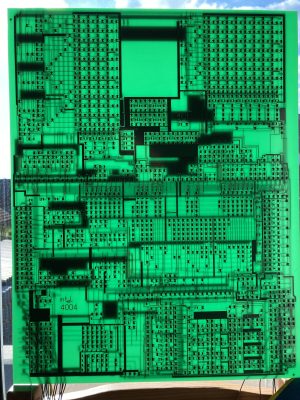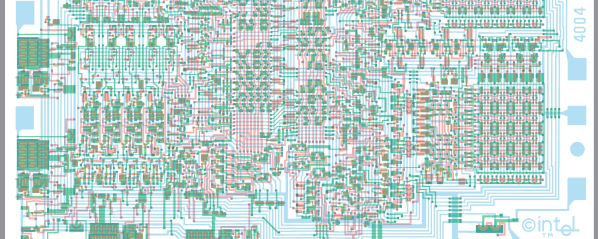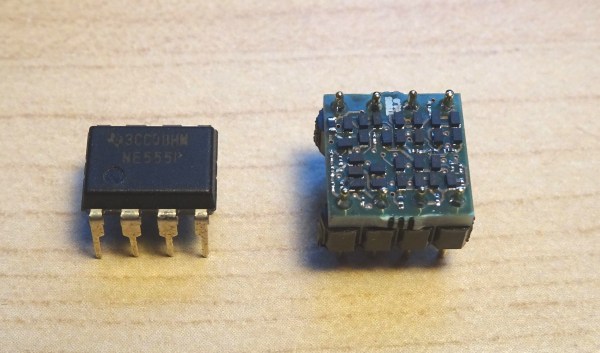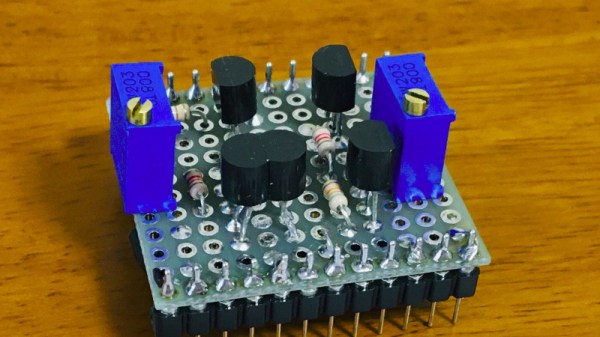
The Intel 4004 was among the first microprocessors and one of the first to use the MOS silicon-gate technology. In the decades long race to build bigger CPUs, it’s been mostly forgotten. Forgotten that is, until [Klaus Scheffler] supersized it over ten-fold!
The project took about 2 years to complete and re-creates it faithfully – all 2,300 transistors included – enough to run software written for the Intel 4004. But the idea for this project isn’t unique and dates all the way back to 2000, so what gives? Turning a bunch of masks for silicon fabrication into a schematic is actually harder than it seems! [Tim McNerney] originally came up with the idea to make a giant 4004 for its “35th anniversary”. [Tim] managed to convince Intel to give him schematics and other drawings and would in return make an exhibit for Intel’s museum. With the schematic straight from [Federico Faggin], software analysis tools from [Lajos Kintli] and [Klaus Scheffler] to actually build the thing, they did what [Federico] did in one year without CAD, but in two with modern tools.
The full story by [Tim] is a lot longer and it’s definitely worth a read.



















